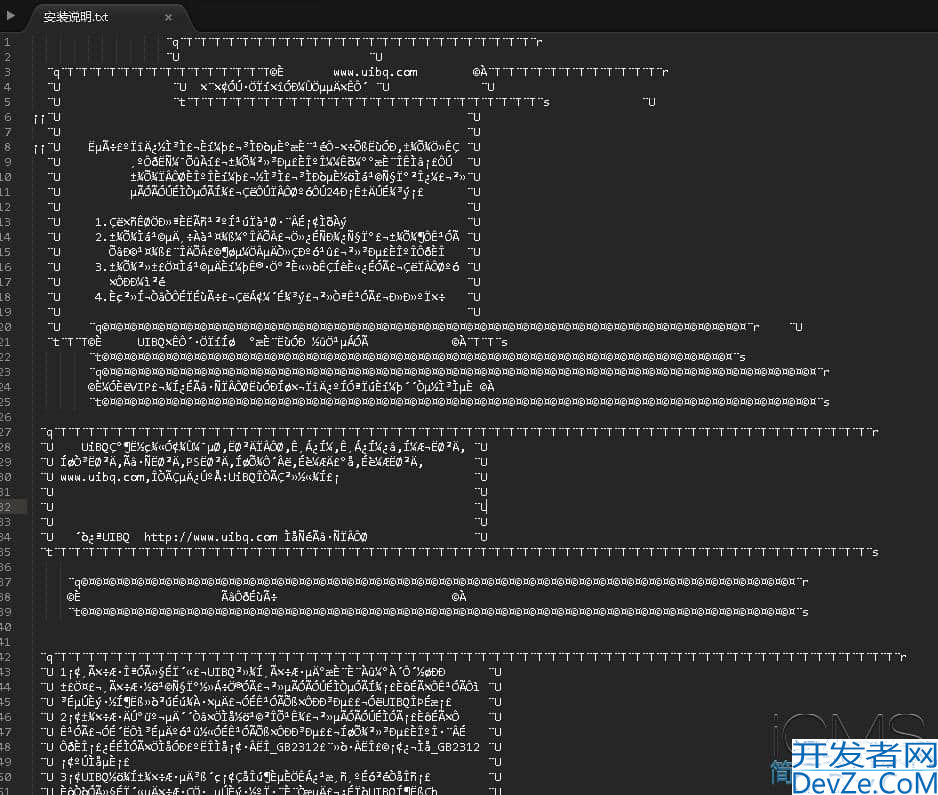springboot如何通过自定义注解对方法参数进行拦截验证
目录
- springboot通过自定义注解对方法参数进行拦截验证
- 元注解参数说明
- @Target类型和说明
- 具体实现:简单版
- 具体实现:封装版
- 总结
sprhttp://www.devze.comingboot通过自定义注解对方法参数进行拦截验证
元注解参数说明
@Target定义注解的作用目标,也就是可以定义注解具体作用在类上,方法上,还是变量上@Retention定义注解的保留策略
| RetentionPolicy.SOURCE | 注解仅存在于源码中在class字节码文件中不包含 |
| RetentionPolicy.CLASS | 默认的保留策略注解会在class字节码文件中存在但运行时无法获得; |
| RetentionPolicy.RUNTIME | 注解会在class字节码文件中存在,在运行时可以通过反射获取到。 |
@Document说明该注解将被包含在Javadoc中@Inherited说明子类可以继承父类中的该注解
@Target类型和说明
| 类型 | 说明 |
| ElementType.TYPE | 接口、类、枚举、注解 |
| ElementType.FIELD | 字段、枚举的常量 |
| ElementType.METHOD | 方法 |
| ElementType.PARAMETER | 方法参数 |
| ElementType.CONSTRUCTOR | 构造函数 |
| ElementType.LOCAL_VARIABLE | 局部变量 |
| ElementType.ANNOTATION_TYPE | 注解 |
| ElementType.PACKAGE | 包 |
具体实现:简单版
1、引入坐标
<!-- 引入aop切面支持 -->
<dependency>
<groupId>org.springframework.boot</groupId>
<artifactId>spring-boot-starter-aop</artifactId>
</dependency>
2、创建自定义注解
package com.hk.annotation;
import java.lang.annotation.*;
@Target({ElementType.METHOD})
@Retention(RetentionPolicy.RUNTIME)
@Inherited
public @interface ParamsIntercept {
}
@Target注解指定ElementType@Inherited说明子类可以继承父类中的该注解@Retention注解指定RetentionPolicy
注意:
注解支持的元素类型除了上面的String之外还有以下:
- 基本类型(int、char、byte、double、float、long、boolean)
- 字符串String
- 类Class
- 枚举enum
- 注解Annotation
- 上述类型的数组类型
当使用其他类型修饰注解元素时,编译期会报错
Invalid type 'Integer' for annotation member
基本类型的包装类型也是不允许在注解中修饰注解元素的;上述代码中 subjectId 不能 定义为 Integer
3、创建切面进行判断
import com.alibaba.fastjson.JSONObject;
import com.bxm.adsmanager.model.dao.user.User;
import org.apache.commons.lang.ArrayUtils;
import org.apache.commons.lang3.StringUtils;
import org.apache.log4j.Logger;
import org.ASPectj.lang.JoinPoint;
import org.aspectj.lang.annotation.Aspect;
import org.aspectj.lang.annotation.Before;
import org.aspectj.lang.reflect.MethodSignature;
import org.springframework.stereotype.Component;
import javax.servlet.http.HttpServletRequest;
import java.lang.reflect.Method;
@Aspect
@Component
public class ParamsBeforeAspect {
private static final Logger logger = Logger.getLogger(ParamsBeforeAspect .class);
@Before("@annotation(com.hk.annotation.ParamsIntercept)")
public void doBefore(JoinPoint point){
try {
long startTime = System.currentTimeMillis();//开始时间
Method method = getMethod(point);
if(null == method){
if(logger.isWarnEnabled()){
logger.warn("method is null");
}
return;
}
Object[] args = point.getArgs();//获取请求参数
if (ArrayUtils.isNotEmpty(args)) {
for (Object arg : args) {
// 对参数进行判断
}
}
long endTime = System.currentTimeMillis();//结束时间
float excTime=(float)(endTime-startTime)/1000;
logger.info("总耗时:" + excTime+"s");
}catch (Exception e){
logger.error("记录日志异常",e);
}
}
private Method getMethod(JoinPoint point) {
MethodSignature methodSignature = (MethodSignature) point.getSignature();
Class<?> targetClass = point.getTarget().getClass();
try {
return targetClass.getMethod(methodSignature.getName(), methodSignature.getParameterTypes());
} catch (NoSuchMethodException e) {
return null;
}
}
4nhZNKtjHm、controller使用
@Controller
@RequestMapping(value = "/")
public class UserManagerController {
//1.传入的是一个具体的值
@ParamsIntercept
@RequestMapping(value = "/getUser/{subjectId}")
public R<String> getUserDetail(@PathVariable Integer subjectId) {
try {
//处理自己的业务
编程客栈 } catch (Exception e) {
e.printStackTrace();
return R.error(e.getMessage());
}
return R.error("操作失败");
}
}
具体实现:封装版
1、引入坐标
<!-- 引入aop切面支持 -->
<dependency>
<groupId>org.springframework.boot</groupId>
<artifactId>spring-boot-starter-aop</artifactId>
</dependency>
2、创建自定义注解
package com.hk.annotation;
import java.lang.annotation.*;
@Target({ElementType.METHOD})
@Retention(RetentionPolicy.RUNTIME)
@Inherited
public @interface ParamsIntercept {
String subjectId();
}
3、创建切面
package com.hk.aspect;
import com.warmer.base.enums.ReturnStatus;
import com.warmer.base.util.R;
import com.warmer.base.util.SpringUtils;
import com.warmer.base.util.StringUtil;
import com.warmer.web.annotation.AnnotationResolver;
import com.warmer.web.annotation.DomainOwner;
import com.warmer.web.entity.KgDomain;
import com.warmer.web.security.TokenService;
import com.warmer.web.service.KnowledgeGraphService;
import org.aspectj.lang.ProceedingJoinPoint;
import org.aspectj.lang.annotation.Around;
import org.aspectj.lang.annotation.Aspect;
import org.aspectj.lang.annotation.Pointcut;
import org.aspectj.lang.reflect.MethodSignature;
import org.springframework.beans.factory.annotation.Autowired;
import org.sprinphpgframework.stereotype.Component;
import org.springframework.web.context.request.RequestContextHolder;
import org.springframework.web.context.request.ServletRequestAttributes;
import javax.servlet.http.HttpServletRequest;
import java.util.List;
@Aspect
@Component
public class DomainValidAspect {
@Pointcut("@annotation(com.hk.annotation.ParamsIntercept)")
public void annotationPointCut() {
}
@Before("annotationPointCut()")
public void doBefore(JoinPoint joinPoint) {
MethodSignature signature = (MethodSignature) joinPoint.getSignature();
// 获取方法注解
ParamsIntercept paramsIntercept = signature.getMethod().getAnnotation(ParamsIntercept.class);
// 获取参数
String subjectIdCode = paramsIntercept.subjectId();
ServletRequestAttributes servletRequestAttributes = (ServletRequestAttributes) RequestContextHolder.getRequestAttributes();
HttpServletRequest request = servletRequestAttributes.getRequest();
Integer memberId = (Integer) request.getAttribute("memberId");
AnnotationResolver annotationResolver = AnnotationResolver.newInstance();
Integer resolver = (Integer) annotationResolver.resolver(joinPoint, subjectIdCode);
log.info("获取请求参数:subjectId:{}, memberId:{}", resolver, memberId);
// 具体业务代码
.......
}
}
4、封装获取参数工具
package com.hk.aspect;
import org.aspectj.lang.JoinPoint;
import org.aspectj.lang.reflect.MethodSignature;
import java.lang.reflect.Method;
import java.util.Map;
/**
* @description:
* @author: HK
* @since: 2024/9/25 15:16
*/
public class AnnotationResolver {
private static AnnotationResolver resolver ;
public static AnnotationResolver newInstance(){
if (resolver == null) {
return resolver = new AnnotationResolver();
}else{
return resolver;
}
}
public Object resolver(JoinPoint joinPoint, String str) {
if (str == null) return null ;
Object value = null;
if (str.matches("#\\{\\D*\\}")) {
String newStr = str.replaceAll("#\\{", "").replaceAll("\\}", "");
if (newStr.contains(".")) { // 复杂类型
try {
value = complexResolver(joinPoint, newStr);
} catch (Exception e) {
e.printStackTrace();
}
} else {
value = simpleResolver(joinPoint, newStr);
}
} else { //非变量
value = str;
}
return value;
}
private Object complexResolver(JoinPoint joinPoint, String str) throws Exception {
MethodSignature methodSignature = (MethodSignature) joinPoint.getSignature();
String[] names = methodSignature.getParameterNames();
Object[] args = joinPoint.getArgs();
String[] strs = str.split("\\.");
for (int i = 0; i < names.length; i++) {
if (strs[0].equals(names[i])) {
Object obj = args[i];
//这里处理出入参数为Map的逻辑
if(obj instanceof Map){
Map item=(Map) obj;
return item.get(strs[1]);
}
Method dmethod = obj.getClass().getDeclaredMethod(getMethodName(strs[1]), null);
Object value = dmethod.invoke(args[i]);
return getValue(value, 1, strs);
}
}
return null;
}
private Object getValue(Object obj, int index, String[] strs) {
try {
if (obj != null && index < strs.length - 1) {
Method method = obj.getClass().getDeclaredMethod(getMethodName(strs[index + 1]), null);
obj = method.invoke(obj);
getValue(obj, index + 1, strs);
}
return obj;
} catch (Exception e) {
e.printStackTrace();
return null;
}
}
private String getMethodName(String name) {
return "get" + name.replaceFirst(name.substring(0, 1), name.substring(0, 1).toUpperCase()python);
}
private Object simpleResolver(JoinPoint joinPoint, String str) {
MethodSignature methodSignature = (MethodSignature) joinPoint.getSignature();
String[] names = methodSignature.getParameterNames();
Object[] args = joinPoint.getArgs();
for (int i = 0; i < names.length; i++) {
if (str.equals(names[i])) {
return args[i];
}
}
return null;
}
}
5、controller使用
@Controller
@RequestMapping(value = "/")
public class UserManagerController {
//1.传入的是一个具体的值
@ParamsIntercept(subjectId= "#{userCode}")
@RequestMapping(value = "/getUser/{subjectId}")
public R<String> getUserDetail(@PathVariable Integer subjectId) {
try {
//处理自己的业务
} catch (Exception e) {
e.printStackTrace();
return R.error(e.getMessage());
}
return R.error("操作失败");
}
//2.传入的是一个对象
@ParamsIntercept(subjectId= "#{userItem.subjectId}")
//3.传入的可能是一个map
@ParamsIntercept(subjectId= "#{params.subjectId}")
}
总结
以上为个人经验,希望能给大家一个参考,也希望大家多多支持编程客栈(www.devze.com)。







 加载中,请稍侯......
加载中,请稍侯......
精彩评论